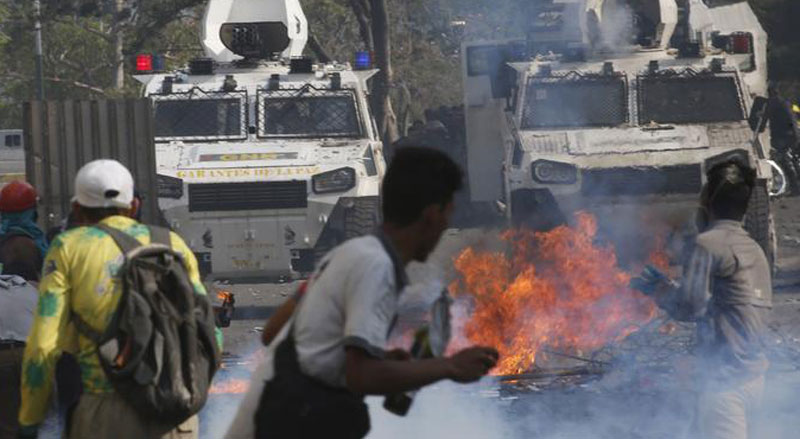Winter Storm Quinlan path tracker LIVE
A POWERFUL “bomb cyclone” storm is on course to hit central and eastern parts of the United States this week and could impact the weekend.
The winter storm, named Winter Storm Quinlan by the Weather Channel, could bring heavy rain, thunderstorms, high winds, snow, and a blast of cold to the Eastern US in particular, AccuWeather reported.
“Confidence is growing for a significant storm that will bring wide-reaching impacts,” AccuWeather Meteorologist Alex DaSilva said.
Parts of eastern Oklahoma to western portions of Ohio, Kentucky, and Tennessee, plus northern parts of Mississippi and Alabama could see a few inches of snow.
A bomb cyclone, also known as bombogenesis, “occurs when a mid-latitude cyclone rapidly intensifies,” according to the National Oceanic and Atmospheric Administration.
Read our Winter Storm Quinlan path tracker blog for the latest updates…
-
Biggest snowstorms of all time
The NESIS takes into account the fact that some of the deadliest storms feature little snowfalls that are blown out of sight by hurricane-force winds.
Some storms are more severe than others because they hit big cities or are so broad that they hit many cities.
-
The Weather Channel in Missouri
Meteorologist Justin Michaels is now in Kansas City, Missouri to report on Winter Storm Quinlan.
-
Roads in ‘decent shape’ in Kansas City
Field Weather Reporter Charles Peek reported from Kansas City, Missouri during Winter Storm Quinlan on Thursday, and the Weather Channel shared his update on Twitter.
“Road conditions are in decent shape as #winterstorm #Quinlan pushes through the Kansas City area,” Peek tweeted.
“Fans are making their way to the @Big12Conference basketball tournament as the snow falls.”
-
If you can’t find cover parking
Lifting the wipers of your car will make it easier to scrape your windshield after the snowstorm.
It can also prevent your wiper blades from freezing to the windshield.
However, if you forget to lift up your wipers, it will not cause any damage.
-
Storing your car during a snowstorm
If you don’t have a covered parking spot, you can ask a friend or a family member if they have an extra one.
Perhaps you know someone who has a two- or three-car garage.
If you don’t know anyone who has an extra covered parking spot, you can put your car in storage.
On average, it costs about $45 to put a standard vehicle in storage for a day.
However, rates can vary depending on the facility that you choose.
-
Before the storm hits, continued
If you have any chargers, purses, garage openers, or keys in your car, you will want to take them out.
Finally, lock your vehicle. This seems simple, but it is easily forgotten.
You will be away from your vehicle for an extended period, so it doesn’t hurt to double-check that you have locked it.
-
What to do before the storm hits
Winter storms can last for days, and it’s never good to leave a car dirty for an extended period of time.
Acidic material could eat away at your paint, and car covers could rub dirt around the clearcoat and make scratches.
So if you know a winter storm is coming, it is a good idea to clean it off quickly, before you park it somewhere safe for the duration of the storm.
After you have washed your vehicle, collect any belongings that you might need over the next few days out of your car.
-
What happens during a cyclone?
It occurs when a midlatitude cyclone rapidly intensifies, dropping at least 24 millibars — A millibar measures atmospheric pressure — over 24 hours.
This can happen when a cold air mass collides with a warm air mass.
An example is when chilly air moves over warm ocean waters.
The formation of this rapidly strengthening weather system is a process called bombogenesis, which creates what is known as a bomb cyclone.
-
Where do bomb cyclones occur?
“Bomb cyclones” occur most frequently along coastlines where warm water is present.
The warm water creates a strong temperature gradient from its surface to the atmosphere just above it.
-
What is a bomb cyclone?
Bomb cyclone is a popular term used by meteorologists for explosive cyclogenesis or bombogenesis.
A bomb cyclone occurs when a low-pressure system’s central pressure drops at least 24 millibars — a millibar measures atmospheric pressure — over 24 hours or less.
This can happen when a cold air mass collides with a warm air mass.
Bombogenesis, “occurs when a mid-latitude cyclone rapidly intensifies,” according to the National Oceanic and Atmospheric Administration.
-
Tornadoes in the Carolinas
“Damaging wind and a few tornadoes are possible late Friday night into early Saturday morning across parts of the Southeast and coastal Carolinas,” the Storm Prediction Center said.
The winds and possible tornadoes would come during thunderstorms that are probable in the area during that time period.
-
Possible power outages
In southern New England, wind gusts could reach 70 to 90 mph, according to AccuWeather.
Power outages could be “extensive” as a result of the windy weather.
-
Snow and wind in the Northeast
“Not only is the Northeast looking at snow with this, but it could also be looking at some strong, gusty winds,” Weather.com meteorologist Domenica Davis revealed about Winter Storm Quinlan.
-
Alabama may see snow
Places as far south as Birmingham, Alabama, could have some snow on Friday night, AccuWeather Meteorologist Alex DaSilva said.
That snow would come after the precipitation initially begins as rain.
-
Tracking Winter Storm Quinlan
“All this snow proves it’s not spring just yet!” the Weather Channel shared on Twitter, alongside a gif of where the storm is expected to go.
-
Wild weather in Dallas
“Temperatures are forecast to shoot back up to near 70 in Dallas on Thursday, only to have rain, sleet, and snow with temperatures dipping into the 30s on Friday,” AccuWeather Senior Meteorologist Alex Sosnowski said.
The last time that Dallas had measurable snow (0.10 of an inch or more) in March was in 2015.
-
Winter weather warning issued
A winter warning has been issued for residents in Tennessee, North Carolina, Florida, Alabama, Texas, Oklahoma. Ohio, Kentucky, and Mississippi.
The artic blast will arrive just days after a round of snow swept through the mid-Atlantic and New England region this week, and as another blanket of snow will hit Central states on Thursday.
-
Impacting millions
The massive winter storm is expected to affect millions of Americans.
Winter Storm Quinlan could dump both rain and snow on different areas while bringing strong winds and plummeting temperatures.
-
Widespread snow
Parts of eastern Oklahoma to western portions of Ohio, Kentucky, and Tennessee, plus northern parts of Mississippi and Alabama could see a few inches of snow.
But much heavier snow is likely farther to the east, according to AccuWeather Senior Meteorologist Alex Sosnowski.
-
‘Significant storm’
The storm is likely to be a noteworthy one.
“Confidence is growing for a significant storm that will bring wide-reaching impacts,” AccuWeather Meteorologist Alex DaSilva said of Winter Storm Quinlan.
-
When will the storm end?
Winter Storm Quinlan is expected to be fast-moving.
It likely won’t last long, with rain quickly tapering off by Saturday night.
-
Lots of snow in the Northeast
The interior Northeast will see the worst of the weather on Saturday and could see half a foot of snow as part of Winter Storm Quinlan.
Northeast Pennsylvania through much of interior New York, Vermont, northern New Hampshire, and inland Maine are likely to see the majority of flurries.
However, no accurate snowfall forecasts have been made just yet.
-
Possible tornadoes
Parts of Florida, Georgia, and the eastern Carolinas could see a small tornado threat emerge Friday night into Saturday as part of the developing storm.
-
Winds in the DC area
The cold front will bring rain and possible thunderstorms to the mid-Atlantic Saturday morning as part of Winter Storm Quinlan.
Those downpours will also bring pockets of gusty winds along the front, with forecasters noting those winds are due to hit between 6am to 10am on Saturday, affecting the area between Washington and Baltimore.
-
Hurricane-level winds
Hurricane winds could develop over the Atlantic Ocean and Canadian Maritimes as part of Winter Storm Quinlan.
Widespread gusts are expected to reach more than 40mph.
And some localized gusts could hit 50 to 60mph, especially near coastal areas in the Northeast, on Saturday.




